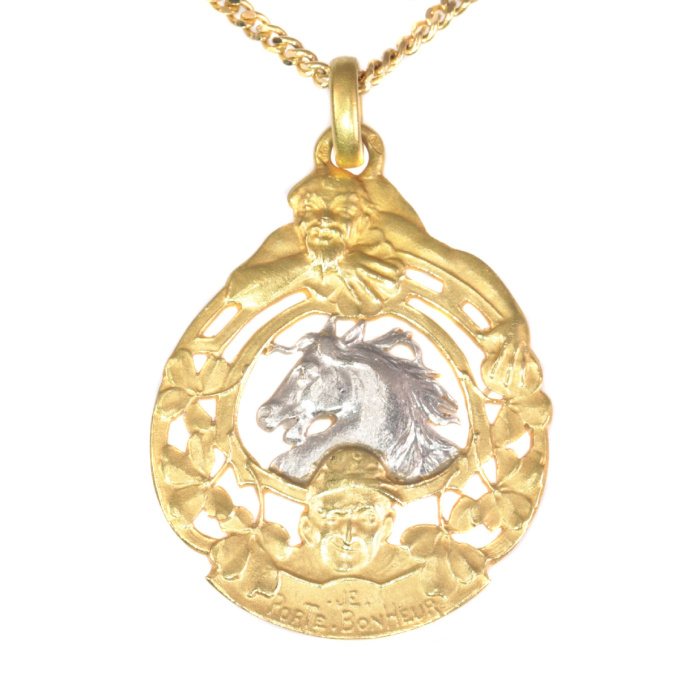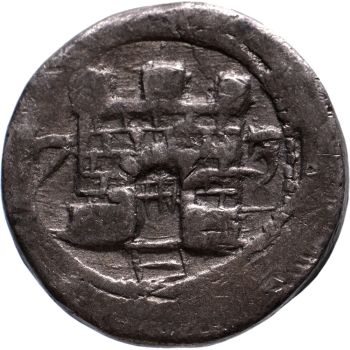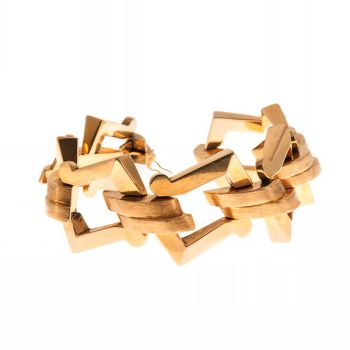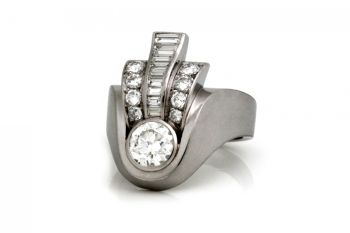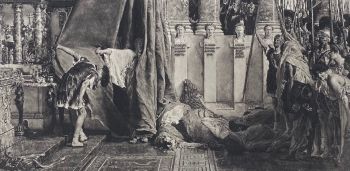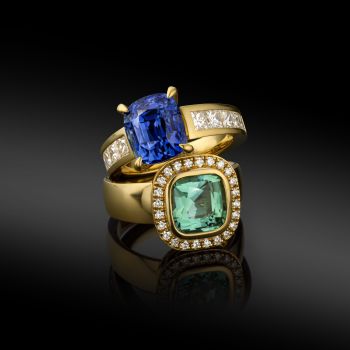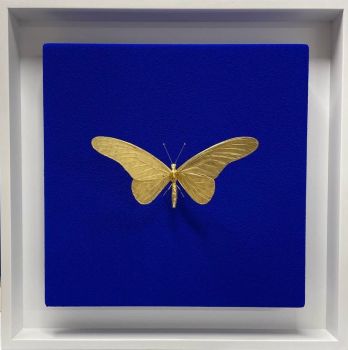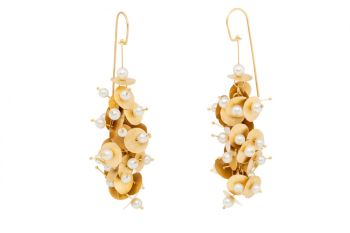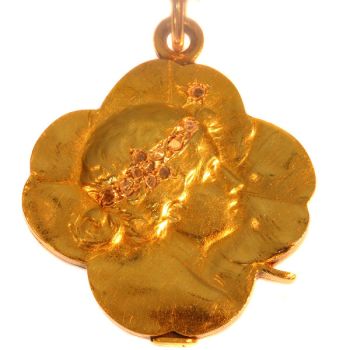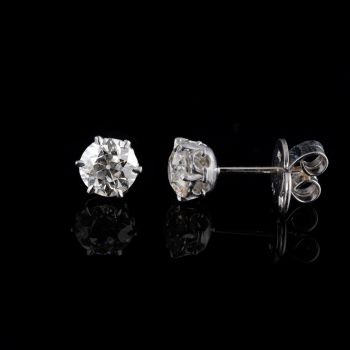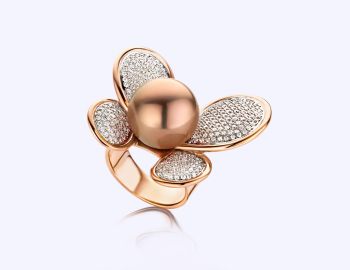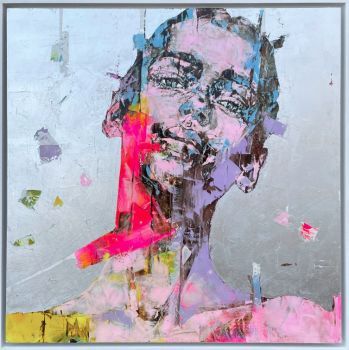Amuleto de boa sorte de ouro francês antigo, símbolo de boa sorte para corridas de cavalos 1900
Artista Desconocido
Oro
Actualmente no disponible a través de Gallerease
- Sobre la obra de arte
Antique jewelry object group: pendant (pictured chain is not included)
Condition: very good condition
- (more info on our condition scale)
Country of origin: France
Style: Late-Victorian - Victorian decorative arts refers to the style of decorative arts during the Victorian era. The Victorian era is known for its eclectic revival and interpretation of historic styles and the introduction of cross-cultural influences from the middle east and Asia in furniture, fittings, and Interior decoration.
Victorian design is widely viewed as having indulged in a regrettable excess of ornament. The Arts and Crafts movement, the aesthetic movement, Anglo-Japanese style, and Art Nouveau style have their beginnings in the late Victorian era.
- See also: late-Victorianor more info on styles
Style specifics: The Late or Aesthetic Victorian Period - Experts divide the reign of Queen Victoria, also called The Victorian era (1837-1901) into three periods of about twenty years each; The Romantic Victorian Period (1837 - 1860), The Grand Victorian Period(1860 - 1880), and the Late or Aesthetic Victorian Period (1880 - 1901).
We consider this to be of The Late or Aesthetic Victorian Period.
Jewelry of this period is changing back from heavy to more smaller, romantic pieces with often whimsical motifs. Jewelers using diamonds and bright gemstones in elaborated and fine feminine pieces.
Period: ca. 1900
- (events & facts of this era, poetry of this era, fashion of this era)
Source of inspiration: Good luck tokens
Theme: The central horse head (most likely made in platinum) is surrounded by four leaf clovers, two men (who could be "lucky devils"?) and a text saying: "Je porte bonheur" which is French for "I bring good luck".
Material: platinum and 18K yellow gold (touchstone tested)
- (more info on precious metals)
Extra information: Four leaf clover - The clover became famous around 1,600 years ago, because, it was said that Saint Patrick in 452 AD stepped from the cathedral in Ireland on Easter morning, stooped down and picked a shamrock. He showed it to the crowd of parishioners, and then said, "This Plant represents the Father, the Son and the Holy Spirit!" Since that time, the three leaf shamrock has become world famous! Around this time when clovers were made popular, the rare four-leaf clover also became popular and wasconsidered to be lucky.
Hallmarks: The French control mark for 18K gold representing a horse's head that was in use in France from about 1838.
- (more info on hallmarks)
Dimensions: height 3,50 cm (1,38 inch) - See picture with a ruler in cm and inches
Weight: 8,40 gram (5,40 dwt)
Reference Nº: 19254-0139
Copyright photography: Adin, fine antique jewelry
- Sobre el artista
Puede suceder que un artista o creador sea desconocido.
Algunas obras no deben determinarse por quién está hecho o por (un grupo de) artesanos. Algunos ejemplos son estatuas de la Antigüedad, muebles, espejos o firmas que no son claras o legibles, pero también algunas obras no están firmadas en absoluto.
También puedes encontrar la siguiente descripción:
•"Atribuido a …." En su opinión, probablemente una obra del artista, al menos en parte.
•“Estudio de….” o “Taller de” En su opinión, una obra ejecutada en el estudio o taller del artista, posiblemente bajo su supervisión
•“Círculo de…” En su opinión, una obra del período del artista que muestra su influencia, estrechamente asociado con el artista pero no necesariamente su alumno.
•"Estilo de …." o “Seguidor de…”. En su opinión, una obra ejecutada al estilo del artista pero no necesariamente por un alumno; puede ser contemporáneo o casi contemporáneo
•"Manera de …." En su opinión una obra al estilo del artista pero de fecha posterior
•"Después …." En su opinión, una copia (de cualquier fecha) de una obra del artista
•“Firmado…”, “Fechado…” o “Inscrito” En su opinión, la obra ha sido firmada/fechada/inscrita por el artista. La adición de un signo de interrogación indica un elemento de duda.
•“Con firma…”, “Con fecha…”, “Con inscripción…” o “Lleva firma/fecha/inscripción” en su opinión la firma/fecha/inscripción ha sido añadida por alguien que no es el artista
Artwork details
Related artworks
Artista Desconocido
Pulseira de diamante do século 18 com entalhes de 2.000 anos1790
€ 23.000Adin Fine Antique Jewellery
 curada por
curada porDanny Bree
1 - 4 / 12- 1 - 4 / 24
Fontana
Broche-colgante de canasta de flores1900 - 1905
Precio a consultarAns Hemke-Kuilboer Juwelier & Antiquair
1 - 4 / 24- 1 - 4 / 6
Vincent Cober
Geelgouden ringen bezet met diamanten blauwe Saffier en Tourmalijn2022
Precio a consultarVincent Cober
Ans Hemke-Kuilboer
Pendientes de diamantes solitarios2000 - 2017
Precio a consultarAns Hemke-Kuilboer Juwelier & Antiquair
1 - 4 / 24

